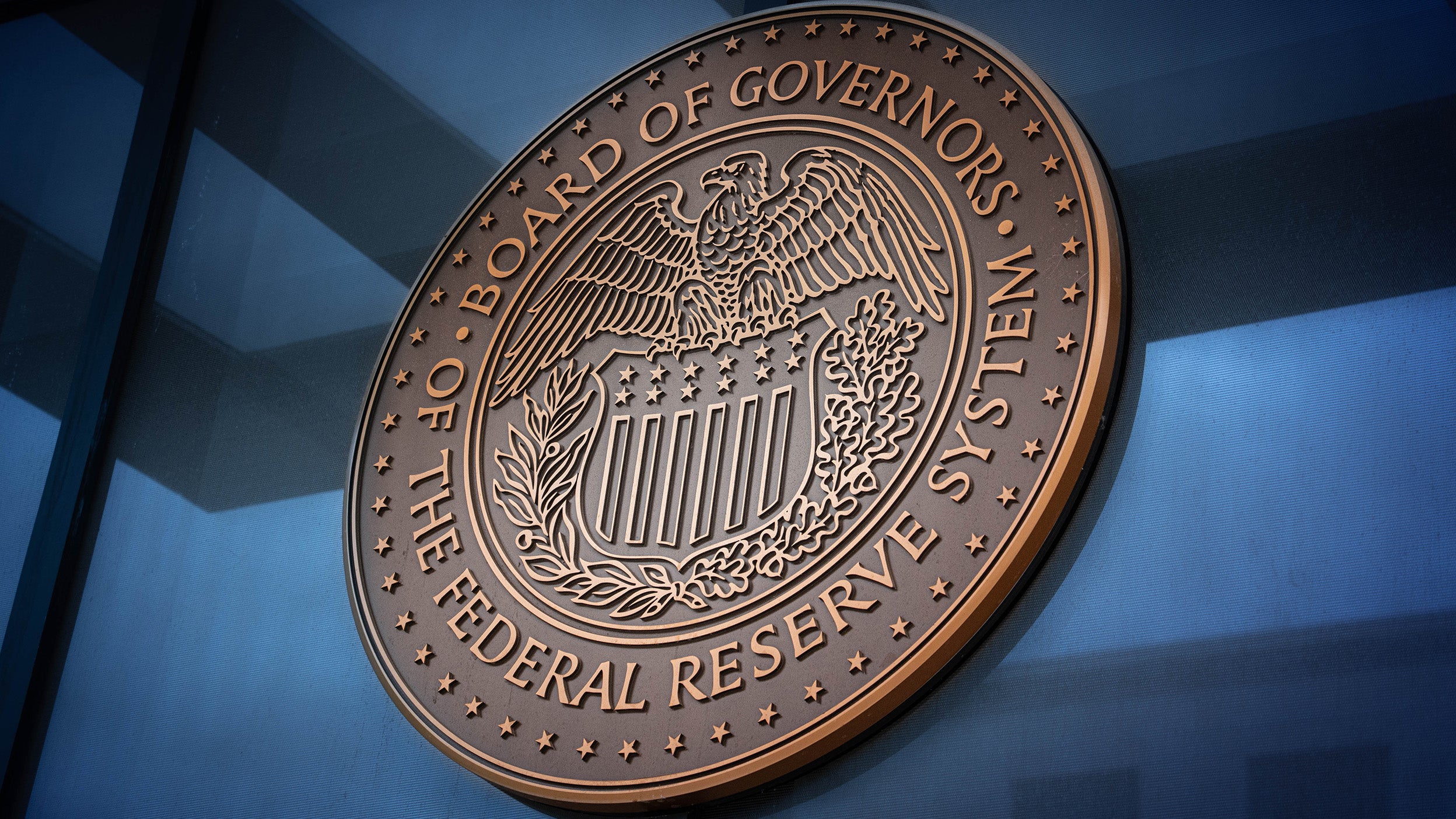
Markets and Economy Above the Noise: Rethinking 2025 narratives
In 2025, clear storylines on the Federal Reserve, AI stocks, and rates captivated us. But the numbers don’t always match the narratives.

How do stocks respond to rate cuts? It’s highly dependent on the state of the economy at the time of the cut.
Artificial intelligence and automation contributed to a surge in corporate profitability per employee.
Despite the surge in gold, broader market behavior suggests investors haven’t lost confidence in US institutions.
“Because the mail never stops! It just keeps coming and coming and coming. There’s never a letup; it’s relentless. Every day it piles up more and more and more, and you gotta get it out, but the more you get it out, the more it keeps coming in! And then the barcode reader breaks! And then, it’s Publisher’s Clearinghouse Day!”
—Newman, Seinfeld
Newman was talking about the mail, but he might as well have been describing what it feels like to be a market strategist in 2025. The issues keep piling up. Then again, so have the gains in the stock market.
By now, the key messages on these issues seem to have reached investors. I know that I’ve made my appointed rounds.
If that’s not enough, now comes the risk of a government shutdown. But like Publisher’s Clearinghouse Day, we know it’s coming every year, and we ultimately learn to ignore it.
So why is the market able to withstand this relentlessness? Growth has been slowing but not collapsing, and potentially reaccelerating in some areas.6 Earnings have generally beaten expectations.7 The Fed is cutting interest rates.
Newman once warned Jerry, “Your day of reckoning is coming.” Investors keep hearing the same warning, but a reckoning remains unlikely.
…the much-anticipated productivity gains have already started. Corporate profitability per employee has been surging.8 This likely represents a structural shift, driven by artificial intelligence, automation, and the reallocation of capital toward intangible assets. The implications for the labor market will play out over time, but it’s hard to look at the chart below and not to want to be a shareholder.
A: That’s highly dependent on the state of the economy at the time of the cut.
Remember, the September rate cut wasn’t the first of this cycle. The Fed began easing in September 2024, and the one-year return from that point was strong,11 with relatively strong gains coming from cyclical sectors such as financials and industrials.12 If the current environment continues to resemble past non-recessionary rate cut cycles like 1984 and 1995, then history suggests that stocks could continue to perform well.
A: Gold prices have been rising due to a mix of macroeconomic and geopolitical factors, including strong central bank buying, expectations of a Fed rate cut, and classic momentum-driven trading. Despite the surge in gold, broader market behavior suggests that investors haven’t lost confidence in US institutions. Treasury yields have dropped sharply since the beginning of the year, reflecting sustained demand for government bonds.13 Inflation expectations remain well anchored, indicating continued trust in the Fed and its policy credibility.14 While the US dollar has weakened in 2025,15 it’s trading only modestly below its long-term average, reinforcing the idea that the rally in gold hasn’t been driven by a loss of faith in the US economy or its financial system.
“A government shutdown would be dangerous and harmful to millions of Americans, and it is not the answer.”
—US House Speaker Mike Johnson
I run the risk of this section being outdated before this hits the “newsstands.” If it means that a shutdown was averted, then I’d welcome that development. Nonetheless, I’ll provide some thoughts. If it’s not needed this time, then you can use the thoughts for the inevitable next time!
Are we partying like it’s 1999? Is the party, as Prince sang, about to be “over, oops, out of time”? The analogy to the late 1990s tech bubble is often made, and understandably so. The market has been driven largely by tech stocks, many of which now trade at elevated valuations.19 The key difference today, however, is that these companies are generally supported by robust earnings growth.20 Comparing the disconnect between price and earnings for Cisco, a tech bellwether of the 1990s, with NVIDIA, a current leader, illustrates the point clearly (see chart below). Unlike Cisco during the bubble era, NVIDIA hasn’t experienced the same divergence between price and earnings expectations.21
I’ve been getting a lot of questions about the direction of the US dollar. I reached out to Hemant Baijal, Head of Macro Alpha and Co-Head of Emerging Markets Debt for Invesco Fixed Income. Here’s a summary of Hemant’s response:
The post-COVID-19 world has ushered in an asynchronous global economic cycle, breaking the long-standing trend of US-led synchronized growth seen since the 2008 Global Financial Crisis.
The US dollar appears to be at the beginning of a structural downtrend, driven by expensive valuations, narrowing monetary policy differentials, and a large overhang of foreign-held US assets.
Ultra-loose fiscal policy and anticipated monetary easing in the US could further pressure the dollar,22 benefiting international markets through improved credit conditions and greater central bank flexibility abroad.
There are likely broad-based opportunities across global fixed income markets, especially in emerging markets like Mexico and Brazil, developed markets like Europe and Japan, and in currencies.
Let’s keep this close to home. My daily commute from a New Jersey suburb to downtown Manhattan is officially back to its full length. I’m not sharing that to earn your sympathy. I chose to live in one of the densest places on the planet. I mention it because it’s a clear sign that the return to the office is real.

In 2025, clear storylines on the Federal Reserve, AI stocks, and rates captivated us. But the numbers don’t always match the narratives.

For investors looking to diversify their mega-cap technology exposure, improving growth and falling interest rates may be good reasons.

A rate cut, which markets are pricing in despite Fed member differences, and an expected improving economy in 2026, could support stocks.


Get the latest information and insights from our portfolio managers, market strategists, and investment experts.
Important information
NA4835470
Image: drotik / Adobe Stock
All investing involves risk, including the risk of loss.
Past performance does not guarantee future results.
Investments cannot be made directly in an index.
This does not constitute a recommendation of any investment strategy or product for a particular investor. Investors should consult a financial professional before making any investment decisions.
Earnings per share (EPS) refers to a company’s total earnings divided by the number of outstanding shares.
Fixed income investments are subject to the credit risk of the issuer and the effects of changing interest rates. Interest rate risk refers to the risk that bond prices generally fall as interest rates rise and vice versa. An issuer may be unable to meet interest and/or principal payments, thereby causing its instruments to decrease in value and lowering the issuer’s credit rating.
The Global Industry Classification Standard (GICS) was developed by and is the exclusive property and a service mark of MSCI Inc. and Standard & Poor’s.
Fluctuations in the price of gold and precious metals may affect the profitability of companies in the gold and precious metals sector. Changes in the political or economic conditions of countries where companies in the gold and precious metals sector are located may have a direct effect on the price of gold and precious metals.
Inflation is the rate at which the general price level for goods and services is increasing.
An inflection point is an event that results in a significant positive or negative change in the progress of a company, industry, sector, economy, or geopolitical situation.
The ISM Services Purchasing Managers' Index, which is based on Institute of Supply Management surveys of non-manufacturing supply executives nationwide, monitors business activity, new orders, employment, and supplier deliveries.
Monetary easing refers to the lowering of interest rates and deposit ratios by central banks.
Purchasing Managers’ Indexes (PMI) are based on monthly surveys of companies worldwide and gauge business conditions within the manufacturing and services sectors.
The risks of investing in securities of foreign issuers can include fluctuations in foreign currencies, political and economic instability, and foreign taxation issues.
The S&P 500® Index is an unmanaged index considered representative of the US stock market.
The S&P 500® Financials Index GICS Level 1 Index includes stocks in the S&P 500 Index classified as financial companies based on the Global Industry Classification Standard (GICS) methodology. The index is market-cap weighted.
The S&P 500® Industrials Sector GICS Level 1 Index represents the industrial sector within the S&P 500 index, as defined by the Global Industry Classification Standard (GICS). It includes companies involved in capital goods, commercial and professional services, and transportation.
In general, stock values fluctuate, sometimes widely, in response to activities specific to the company as well as general market, economic, and political conditions.
Many products and services offered in technology-related industries are subject to rapid obsolescence, which may lower the value of the issuers.
The price-to-earnings (P/E) ratio measures a stock’s valuation by dividing its share price by its earnings per share.
The opinions referenced above are those of the author as of Sept. 19, 2025. These comments should not be construed as recommendations, but as an illustration of broader themes. Forward-looking statements are not guarantees of future results. They involve risks, uncertainties, and assumptions; there can be no assurance that actual results will not differ materially from expectations.
This link takes you to a site not affiliated with Invesco. The site is for informational purposes only. Invesco does not guarantee nor take any responsibility for any of the content.